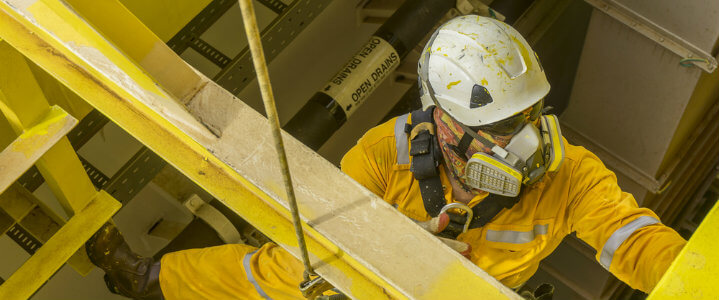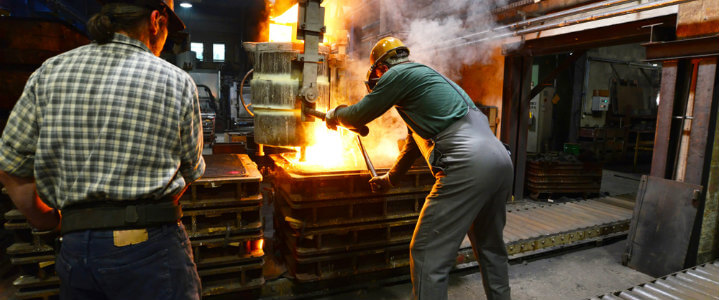Manufacturing is the process of turning raw materials into new products using machinery and equipment, and nowhere is the industry stronger than in the United States.
With plentiful resources and infrastructure to move products, more than 18 percent of all the world’s goods come from the U.S. Manufacturing is a cornerstone of the American economy, and implementing safety best practices ensures that economic engine continues running smoothly.
Manufacturing Safety Statistics
Despite even the best safety efforts, the harsh reality is that accidents do happen. During fiscal year 2018, the Occupational Safety and Health Administration (OSHA) levied more than $50 million in OSHA fines for violations of safety regulations, and with good reason.
For every 100 full-time employees, nearly 4 people experienced a workplace injury or illness. OSHA safety requirements in manufacturing are designed to keep the men and women who go to work in the industry each day safe. Maintaining health and safety in a manufacturing environment is our top priority, and it should be yours, too.
A safe work environment keeps your business in OSHA compliance, reduces your workers’ compensation claims, and boosts employee morale and productivity.
Top Safety Issues in the Manufacturing Industry
Identifying and addressing potential industrial safety hazards before an incident occurs can help keep your employees safe and on the job. According to OSHA, the top safety issues in the manufacturing industry are:
- Hazard communication standard
- Respiratory protection
- Lockout/tagout
- Powered industrial trucks
- Machinery and machine guarding
Hazard Communication Standard
OSHA requires that you gather and maintain as much information as possible about all hazardous chemicals you use or produce. This means identifying the classification of a chemical, properly labeling it, maintaining safety data sheets and providing comprehensive training for your employees.
Respiratory Protection

It is imperative that employees wear enough respiratory protection to keep out harmful contaminants such as gas, smoke, silica, and vapors that they may encounter during their work. These contaminants can cause cancer, lung impairment, diseases, and even death if proper equipment is not used.
Lockout/tagout
Hazardous energy from electrical, mechanical, hydraulic, chemical, and other sources in machines and equipment can pose a serious threat to your employees and the environment when accidentally released. A lockout/tagout procedure defines how you will control this energy and disable machinery to prevent accidental release.
Powered Industrial Trucks
Powered industrial trucks are machinery such as forklifts that are used to move materials. These may seem harmless, but forklifts can be accidentally driven off loading docks and the loads they carry can fall, causing harm to the driver.
Training is the best method of prevention for these types of accidents and helps your business comply with OSHA manufacturing regulations and loading dock safety rules.
Machinery and Machine Guarding
Machinery is essential to the manufacturing process but using these complex pieces of equipment can sometimes lead to burns, blindness, and amputation. Having safeguards, written operating procedures and comprehensive training in place can help keep your employees safe and protected.
OSHA Safety Requirements for Manufacturing and Industrial Plants
The best way to ensure your company complies with all OSHA safety requirements for manufacturing is to work with a team of experts to thoroughly analyze your company, potential risks, applicable laws and regulations and implement a training program through safety training services.
OSHA requirements specific to your company may depend on what your business produces, but the following requirements can help ensure safety in manufacturing plants:
1. Hazard Communication Standard
Your company must develop a hazard communication plan to ensure employees are made aware of hazardous chemicals and the threats they pose.
2. Emergency Action Plan
Your emergency plan should clearly define what employees should do in the event of a fire or other emergency.
3. Fire Prevention Plan

Your plan should address fire safety for employees and evaluate the possible hazards in your facility.
4. Exit Routes
As an employer, you must comply with all of OSHA’s regulations relating to exit routes.
5. Personal Fall Protection Systems
According to OSHA, falls from heights are among the leading causes of workplace injuries and fatalities. OSHA implemented a new rule relating to training and inspections in January 2017. You may consider consulting with a safety company to ensure your company complies with this rule and follows relevant working at height safety tips.
Where Do I Find Help with Manufacturing Safety Programs?
The next time you’re researching manufacturing safety meeting topics, think about ways in which you can implement safety best practices into your company’s pre-existing safety plans. With lives and your business at stake, there is always room for improvement.
Safety by Design provides safety consulting in Houston for employers who want to maintain full OSHA compliance with best-in-class safety solutions. Contact our experts today to learn how you can prevent workplace injuries, stay up-to-date on regulations and avoid costly penalties and workers’ compensation claims.



